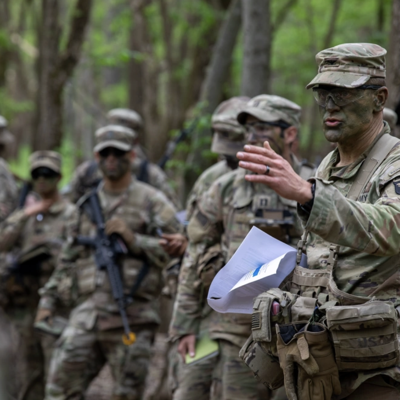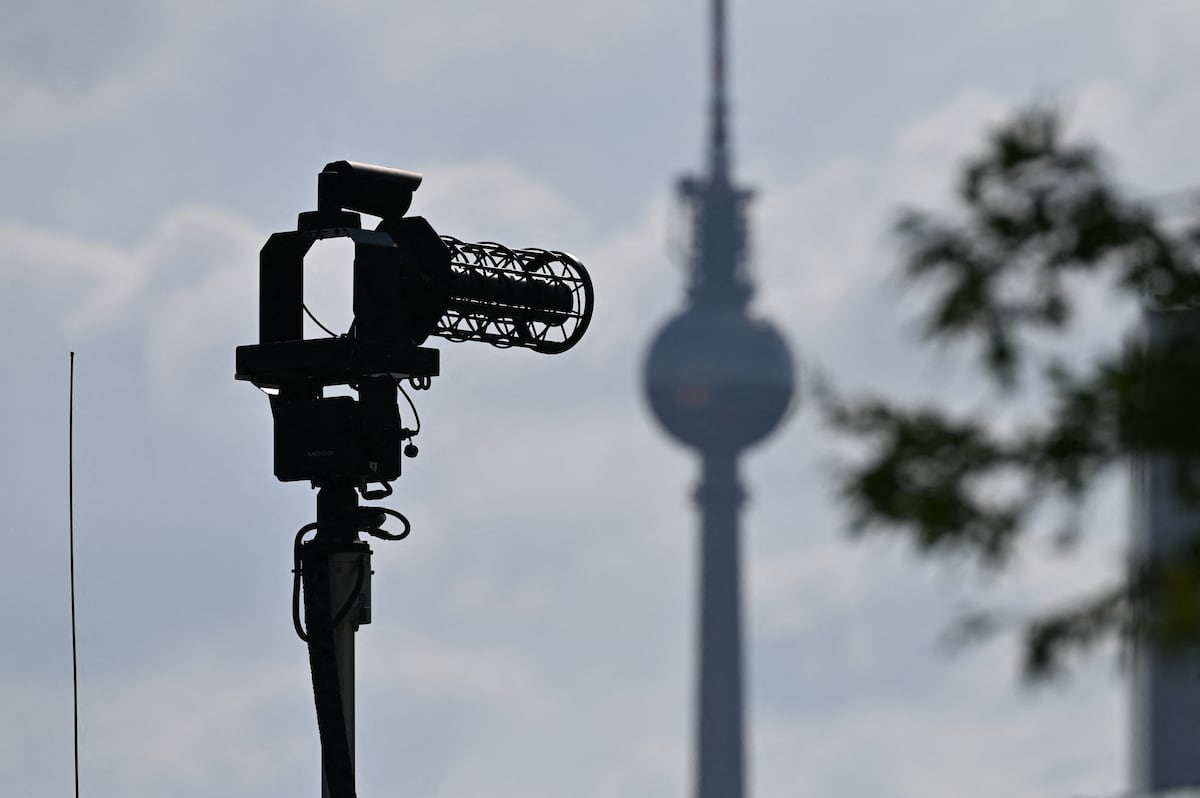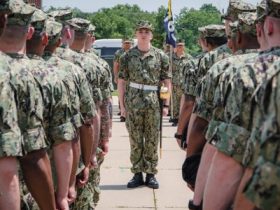When Col. Josh Glonek has a question about how to use the mountain of new technology the Army is sending his way, he knows just who to ask: Col. James Stultz.
That’s because Stultz has been there—since April, his unit has been learning how best to use the dozens of drones, various electronic warfare systems, and new comms gear given to them as part of a major Army modernization effort dubbed “transformation-in-contact.”
Now, they can pass on that knowledge to new brigades. “They should not have to learn any of the lessons that we learned,” Stultz said.
Announced in February, “transformation-in-contact” consists of the Army giving three brigades an assortment of tech inspired in part by the war in Ukraine—then letting those units figure out what works and what doesn’t.. The three brigades are Stultz’s 101st Airborne 2nd Brigade, the 25th Infantry Division’s 2nd Brigade, and Glonek’s 10th Mountain Division’s 3rd Brigade.
As the Army presses ahead with its effort, including expanding it to four more brigades, units already in the program are sharing what they’ve learned. In a joint interview with Glonek and Stultz during the Association of the U.S. Army’s annual Washginton conference, the commanders also said they are using their work to identify more modernization needs for the future.
The first in line
Stultz’s 2nd Brigade, 101st Airborne Division, is furthest along in the transformation process, having tested out new gear and organizational concepts during an August rotation to one of the Army’s most realistic combat training centers. The 2nd Brigade of the 25th Infantry Division recently completed a tour at a similar center in the Pacific, while Glonek’s 3rd Brigade, 10th Mountain Division has a tour to a Europe-based center coming up this winter.
Stultz said his brigade’s rotation through the Joint Readiness Training Center showed some of the equipment is working well.
Transporting soldiers with the new Infantry Squad Vehicle (ISV), a quiet, nine-seat vehicle based on a pick-up truck design, is “huge,” Stultz said. “The ISV can get things where other vehicles just can’t.”
That flexibility means his unit can pop up where the enemy least expects it. During the exercise, Stultz’s brigade executed what he called a “bold flanking maneuver” right past the noses of the U.S. forces playing their enemy.
“[The enemy roleplayers] had no idea where we were—because we could go a long way, very fast, and move a lot of people,” he said. Soldiers from the 2nd Brigade are now using the vehicle to help assist in Hurricane Helene relief efforts.
Stultz also praised the unit’s communications gear, which allowed him to run satellite comms, radio traffic, and other forms of communication from a cell phone.
“Having the ability to use my cell phone as a [satellite] phone was a game changer,” Stultz said.
Stultz also noted the success of a program called Shrike AI, formerly known as Sentinel AI. The program automatically detects objects in drone feeds and sends the coordinates to the Army’s artillery-coordinating software, the Advanced Field Artillery Tactical Data System. The system also calculates targeting adjustments based on where it sees an artillery round strike.
The program “cuts about a minute,” off the time it takes to coordinate an artillery strike, Stultz said. “It is a game changer.”
Data exhaust
The fielding program is intended to quickly reveal what works and what doesn’t so the Army can adjust, and Stultz said it has already raised some new questions for his unit.
One challenge, he said, is that having dozens of drones creates a significant amount of data that someone must comb through for relevant information.
It’s particularly difficult when soldiers are already stressed out, hungry, and tired, and they may fail to spot enemy vehicles hidden in the hours of drone footage.
But incorporating object detection into the drones would help observers sort through the visual clutter: “We have got to put some sort of robot in between the feed and the operator,” he said.
Stultz’s unit currently lacks the ability to easily stream drone footage back to its command posts, as drone operators do in Ukraine. But he said he prefers not to stream video anyway, as it could be a distraction. Instead, he wants tools that would alert soldiers when an enemy vehicle had been detected.
“More people don’t need to see the feed—we just need the data on it,” he said. Glonek agreed, pointing out that more automation would mean fewer people in a command post, which could make the command post harder for enemy forces to spot.
Stultz also learned another lesson about command posts: During its August training exercise, the brigade operated two. One was smaller and another larger, which combined administrative, logistic, and planning functions.
The larger command post just had too much going on, Stultz said. “Everybody [was] talking right next to each other, and they can’t think,” he said.
Next time, Stultz wants to set up three command posts: “one can be administration, logistics, one could be plans, and then the other is current operations.”
The last in the process
All those lessons are now filtering to Glonek, who is getting his troops ready for a winter rotation to a similarly realistic combat training center in Europe.
The two talk frequently about how best to use their communications network, and the best way to do electromagnetic deception, Glonek said.
Glonek has also set up a company in every battalion that pairs a drone platoon with reconnaissance and mortar units, similar to how Stultz arranged his forces. Stultz’s drone-enabled company is dubbed the “Multi-Purpose Company,” while Glonek’s units are called “Strike” companies.
Though the two brigades’ capabilities are similar, there are some differences. For example, Glonek’s brigade lacks Stultz’s Multi-Functional Reconnaissance Company (MFRC), a drone and electronic-warfare heavy company capable of dwelling deep behind enemy lines and identifying targets.
“It’ll be a big learning objective for the Army to understand what he was able to achieve, with the MFRC, versus what I’m able to achieve, which will be through the use of technology, not an actual ground formation,” Glonek said.
And the Army is also considering changes to the MFRC, Stultz said, noting the unit “comes at a cost.”
“We’re trying to look at multiple options as an Army, of like, OK, could we do it without it, or do we need it?” he said.
Glonek’s brigade will come to their winter training exercise loaded with even more drones than Stultz did—including what Glonek called “massive amounts” of small drones.
Every platoon will get three short-range drones, for a total of 145 small drones across the brigade, Glonek said. Those drones will be from Skydio, the current drone provider of the Army’s Short Range Reconnaissance Program.
Inspired by observations from Ukraine, the unit will also equip some of its small drones with bomb release mechanisms. The mechanisms are 3D printed based on a design from a NATO-backed effort, Glonek said.
The Army has also given the brigade $5 million to buy medium-range reconnaissance drones to equip the Strike company’s drone platoon. These systems will allow the drone platoons to fly longer and farther. In September, the Army chose two systems for tranche one of its medium-range drone program: Anduril’s Ghost X and Performance Drone Works’ C-100.
The brigade will also bring a drone capable of automatically tracking enemy vehicles, Glonek said. Before deploying, the brigade will upload images of the vehicles used by the forces playing their adversary.
If the drone finds an “enemy” vehicle along the predetermined route, it will then send a picture, the vehicle’s coordinates, and other info back to the command post, Glonek said.
Glonek’s unit will likely need bigger, more substantial command posts than the 101st, because of Europe’s freezing winter temperatures. “It’s hard to get into a super small, austere command post” in winter, he said.
It will also do deception operations differently. Stultz’s troops brought along miniature computers meant to broadcast as if they were devices in a command post, which was sufficient because they knew the forces playing their enemies relied on detecting electronic emissions.
Glonek, though, knows the soldiers playing the enemy at the European center are likely to check out suspected 10th Mountain positions by drone. He’ll therefore need to also set up fake physical sites, and said, which he will likely do by setting up tents or designating a radar, since it can be wheeled around easily.
Still, there are trade-offs, Glonek said: the more realistic the unit makes the fake sites, the more soldiers must do to set them up, which could draw the enemy’s attention.
Regardless, Glonek knows he can always go to Stultz for what to do—and what not to do.
“We’re on a pyramid of innovation,” Stulz said. “What we did was kind of that base layer.”
Read the full article here








Leave a Reply